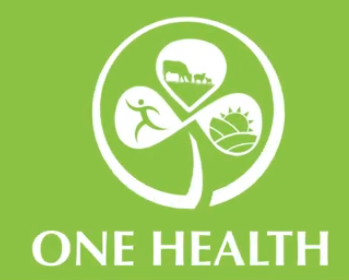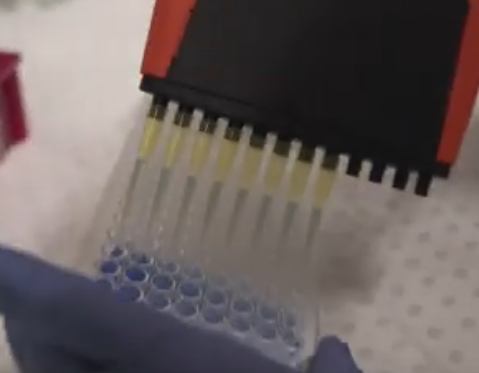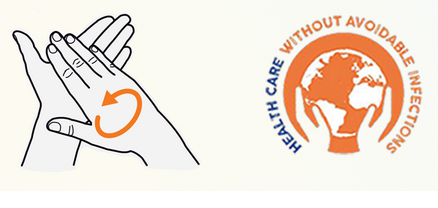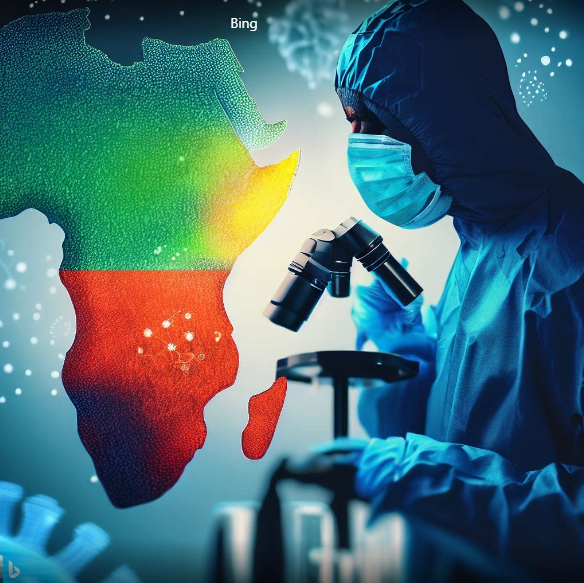University of Buea
Available courses

Description:
Molecular characterization of the genetic diversity mechanism(s) underlying a given phenotypic result obtained by traditional antimicrobial sensitivity testing as well as Microbroth dilution methods, is now an integral part of many clinical investigations in relation to infectious diseases, whether in humans or animals. This course aims to introduce students to some of the common molecular methods currently used for detection of AMR genes. These include PCR systems, DNA microarray, whole-genome and Nanopore sequencing, metagenomics, bioinformatics and genomic data analysis, MALDI TOF method.
Content:Phenotypic resistance testing; More advanced quantitative and molecular-based methods and their quality control; Necessary skills in obtaining and handling samples of faeces from animals and humans and samples of soil and water from the environment; Growing pure culture; Phenotypic disc diffusion analysis of resistant isolates; Serotyping/phage typing; Quantitative and molecular-based approaches including Electrophoresis methods, Conventional, Polymerase chain reaction (PCR), quantitative PCR (qPCR), Shot-gun sequencing, Next-generation Sequencing (NGS) and introducing whole genome sequencing and its uses for typing, generating phylogenetic trees, resistome, virulome and mobilomes analysis and identifying mutations related to AMR, Microfluidic methods as well as Artificial intelligence.
Learning outcome: This module will provide to the participants the skills and knowledge to
Describe some of the phenotypic methods commonly used for screening
Understand and use different genotypic methods to detect AMR
To compare advantages / disadvantages of genotypic versus phenotypic methods
Understand how more data from detailed testing for resistance mechanisms/genes contributes to AMR surveillance
Apply your knowledge of these laboratory tests to interpret relevant data;
Develop skills to introduce your data in a baseline system already existing and carry out analysis and result interpretation.
Understand the annotation of genes involved in the resistance mechanisms detected
Prerequisite: Classical method of AMR diagnosis
Reading resources
https://apps.who.int › rest › bitstreams › retrieve: Molecular methods for antimicrobial resistance (AMR)
Review article by Beatriz S. P. Galhano et al., Antimicrobial Resistance Gene Detection Methods for Bacteria in Animal-Based Foods: A Brief Review of Highlights and Advantages.
Molecular Methods for Detection of Antimicrobial Resistance by Muna et al December 2017Microbiology Spectrum 5(6) DOI: 10.1128/microbiolspec.ARBA-0011-2017
Rapid Methods for Antimicrobial Resistance Diagnostics – MDPI https://www.ncbi.nlm.nih.gov/pmc/articles/PMC7373752/
- Teacher: Dr Tanih Nicoline
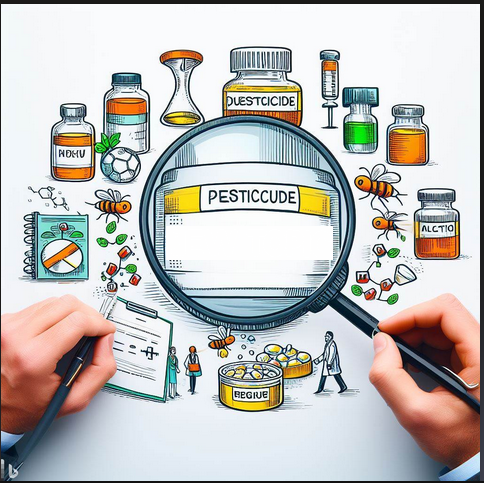
Description: To understand drug/pesticide regulation, enforcement and policy in relation to appropriately and safely use of antimicrobials and importance of quality assurance to improve drug quality
Content: Drug/pesticide regulation, enforcement and Policy; distribution systems; Pharmacovigilance; Drug Quality Control and Quality Assurance; Good storage and distribution practices for products; Categories of counterfeiting activities, and impact on AMR.
Learning outcome: By the end of this course the participants will be able to:
Interpret the national policies (regulation and enforcement) on importation, distribution and use of antimicrobials agents (animal, human, agriculture) related to AMR;
Analyze the different drug/pesticide distribution systems (legal and parallel circuits) and authorize product in the country;
Assess national and international guidelines about antimicrobials use with regard to prescribing decision making and behavior of prescribing (social and economic). (PowerPoint, group discussion, case study);
Illustrate how multisectoral collaboration can be used to remove policies silo,
Explain the national pharmacovigilance system and process to reporting for side effects and lack of efficacy;
Identify quality problems related to antimicrobials products (e.g., counterfeit drugs, substandard drug, mislabeling of drugs),
Apply good packaging, storage and distribution practices for antimicrobials products
Reading resources:
“Determinants of pharmaceutical quality” found on page 6 (figure 19.2) on the link below https://www.msh.org/sites/msh.org/files/mds3-ch19-qualityassurance-mar2012.pdf
Differences between quality assurance and quality control http://www.qualitygurus.com/download/QM001DifferenceBetweenQualityAssuranceAndQualityControl. pdf
The Global Threat of Counterfeit Drugs: Why Industry and Governments Must Communicate the Dangers http://journals.plos.org/plosmedicine/article?id=10.1371/journal.pmed.0020100 ;
Quality assurance for pharmaceuticals https://www.msh.org/sites/msh.org/files/mds3-ch19-qualityassurance-mar2012.pdf ;
Good storage and shipping practices https://pharmacy.ks.gov/docs/default-source/default-document-library/ups-36-good-storage-andshipping-practices.pdf
- Teacher: Dr Manfo Tsague Faustin Pascal
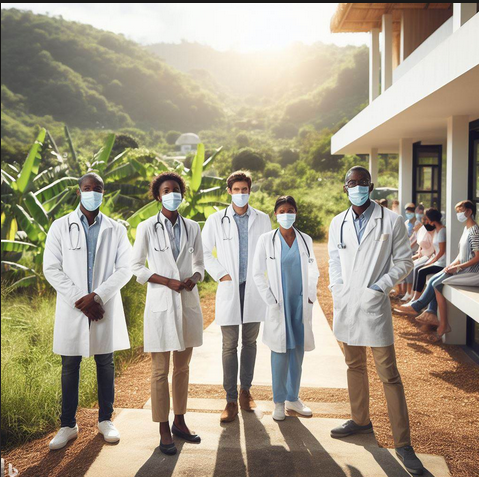
OBJECTIVE: To provide an appraisal of the essential structures and practices in both clinical and laboratory settings, and the role of administrators in enabling effective collaboration and data collection.
LEARNING OUTCOMES: Upon completion of this course, learners will be able to:
Describe the roles in a diagnostic stewardship program
Explain the principles of collecting appropriate clinical samples
Discuss the range of laboratory techniques available r bacterial isolation, pathogen identification, and AST
Explain how microbiology can be appropriately reported to clinicians
Analyze factors affecting bacteriology laboratory turnaround times and reporting
Promote good working relationships between laboratories and clinicians for effective diagnostic stewardship
Describe diagnostic stewardship principles and practice in surveillance at national and international levels
Propose a procedure to introduce a diagnostic stewardship program.
Pre-requisites: AMR501 (Epidemiology of Infectious Diseases and introduction to Antimicrobial Resistance)
Course Content: Diagnostic Stewardship and managing AMR (Where does Diagnostic stewardship fit in, saving money, finding the sweet spot, Diagnostic workflow in clinical microbiology laboratory, Pre-analytical stage (What affect appropriate sample selection, Principles of sample collection, Handling and transporting specimen correctly, packaging specific samples); Analytical stage (Rapid Diagnostic Tests, MALDI-TOF Mass spectrometry, Choosing Laboratory tests, Laboratory and Clinical Communication); Post-analytical stage (Reporting results immediately and appropriately, Complementary information required for treatment, Summary reports and surveillance); Diagnostic stewardship and GLASS; What is needed for Diagnostic Stewardship; Diagnostic stewardship committee and its role.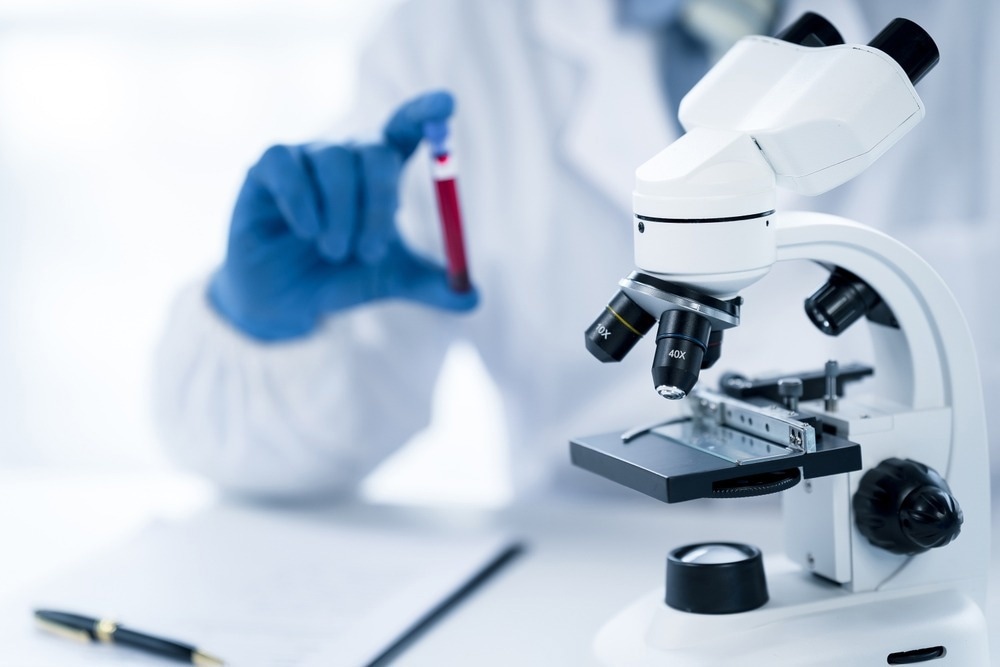
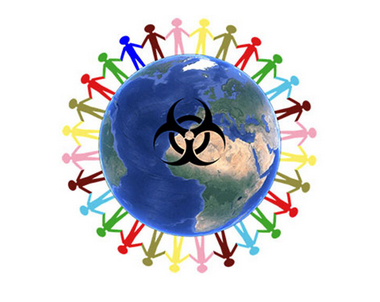
The course aims to describe the importance of quality management system and
standardization, the importance of having and strong national laboratory system (quality
diagnostic, national surveillance and international standards) in order to better monitor and prevent
AMR, biosafety, biosecurity and risk management
- Teacher: Dr Zofou Denis

This course introduces participants to core competencies of antimicrobial stewardship
and how they can be applied to common clinical scenarios and edify them with useful knowledge
and skills which enable them to contribute to enhancing appropriate use of antimicrobial agents and
to optimize clinical outcomes, while highlighting the role of different healthcare stakeholders
(human and veterinary) in stewardship implementation.
- Teacher: Dr Zofou Denis
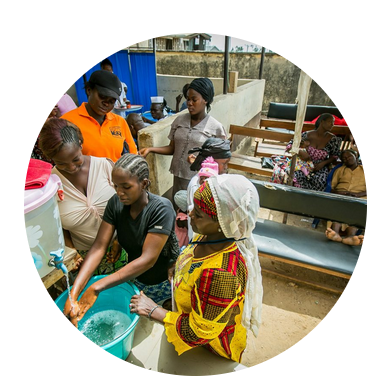
To introduce the concepts and principles of IPC and explore existing gaps, as well
as opportunities to IPC investigations and interventions in a variety of settings, including
applications to both human and veterinary medicine, agronomy and the environment
- Teacher: Dr Zofou Denis
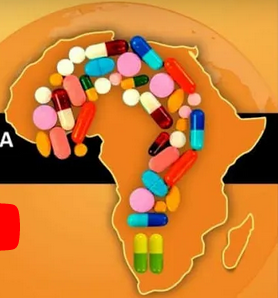
To introduce the core concepts, approaches, and methods for analyzing AMR/AMU
data, including descriptive and inferential statistics, and how they can be used to answer important
questions about AMR. The module will also explain standard measurement units for AMR, AMU
and AMC
- Teacher: Dr Zofou Denis
- Teacher: Prof. Nicolas Tendongfor
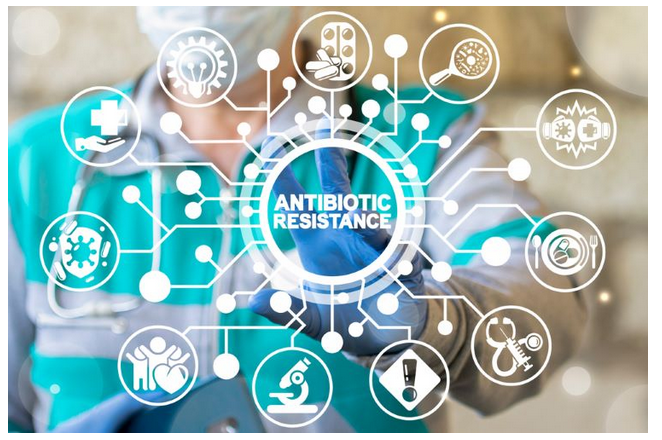
The main objective is to introduce AMR surveillance systems and One Health
approach to AMR surveillance. It also introduces local, national and global AMR surveillance
networks and covers the functions of these networks and the relevant tools developed for the
management and analysis of AMR data.
- Teacher: Dr Zofou Denis
- Teacher: Dr. Abdel Jelil Njouendou
- Teacher: Prof. Dickson Shey Nsaghads
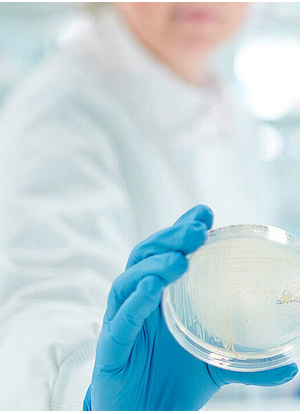
The course aims to provide students with an opportunity to evaluate the diverse
modern technologies available for diagnosis of infections. Working in groups, students will
research current diagnostic technologies and devices for a selected disease, assessing the
limitations of the current diagnostic tests, and will devise a new diagnostic device or
methodological application to overcome the limitations and improve diagnosis.
- Teacher: Dr Zofou Denis
- Teacher: Prof. Roland Ndip Ndip
- Teacher: Dr Esemu Seraphine

Description: To provide students with broader understanding of various aspects of waste management (from its generation to processing with options for reuse and recycle, transport, and disposal) in hospital, livestock, agro-environmental industry, and household settings and discuss the implications on AMR.
Learning outcome: Upon completion of this course, learners should be able to:
discuss waste characterization and its management,
discuss the various technological applications for processing of waste and ways of disposal;
discuss the presence of antimicrobial product in water, soil crops and foods;
discuss the measures to prevent environmental contamination and design a program to manage residual waste; discuss the economic and sustainability aspects of waste management;
describe the integrated waste management concepts, particularly for urban settings.
Pre-requisite: None
Agga GE, Arthur TM, Durso LM, Harhay DM, Schmidt JW. Antimicrobial-Resistant Bacterial Populations and Antimicrobial Resistance Genes Obtained from Environments Impacted by Livestock and Municipal Waste. PLoS One. 2015 Jul 21;10(7):e0132586. doi: 10.1371/journal.pone.0132586. PMID: 26197056; PMCID: PMC4510610.
Gaze W, Depledge M. Antimicrobial resistance: investigating the environmental dimension - frontiers 2017: emerging issues of environmental concern chapter 1. https://wedocs.unep.org/bitstream/handle/20.500.11822/22263/Frontiers_2017_CH1_EN.pdf?sequence=1&isAllowed=y
Reducing antimicrobial resistance how health professionals can help: https://noharm-europe.org/sites/default/files/documentsfiles/4560/HCWHEurope_AMR_Factsheet_Dec2016.pdf hptts: //www.who.int/topics/medical_waste/fr/index.html ;
Safe management of health care by A. Prüss, E. Giroult and P. Rushbook, WHO, 2010: Agricultural antibiotics and resistance in human pathogens: http://apps.who.int/iris/bitstream/handle/10665/42175/9241545259.pdf;jsessionid=A73F618234FFD37274731D757A85933D?sequence=1
Prüss A., Giroult E. and Rushbrook P. (1999) Safe Management of Wastes from Health-care Activities, Geneva, World Health Organization.
SW-846 (1980) Test Methods for Evaluating Solid Waste, Physical/Chemical Methods, Washington, DC, USEPA, Available at http://www.epa.gov/epawaste/hazard/testmethods/sw846/index.htm. ;
Tchobanoglous G., Theisen H. and Vigil S. (1993) Integrated Solid Waste Management: Engineering Principles and Management Issues, New York, McGraw-Hill.
- Teacher: Prof: Beatrice Ambo Fonge
- Teacher: Prof. Emmanuel Acha Asongalem
- Teacher: Dr Zofou Denis
- Teacher: Dr Manfo Tsague Faustin Pascal
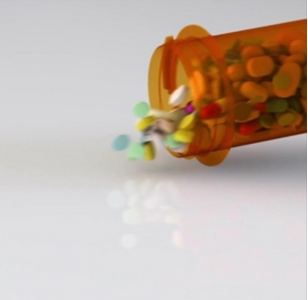
To introduce the core concepts, approaches, and methods for analyzing AMR/AMU
data, including descriptive and inferential statistics, and how they can be used to answer important
questions about AMR. The module will also explain standard measurement units for AMR, AMU
and AMC
- Teacher: Dr Tanih Nicoline
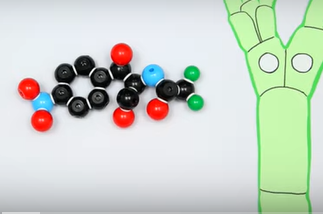
To introduce students into alternatives to antibiotics; describe the advantages and disadvantages of some specific examples like phage therapy, predatory bacteria, and natural product-based traditional medicine, and discuss how these can help tackle AMR
- Teacher: Prof. Moses N. Ngemenya
Antimicrobial drug resistance (AMR) is the ability of a microbe to
resist the effects of medication which was previously used to treat
them.
Resistant organisms (they include bacteria, fungi, viruses and some
parasites) are able to withstand attack by antimicrobial medicines,
such as antibiotics, antifungals, antivirals, and antimalarial . Standard
treatments become ineffective and infections persist increasing risk
of spread to others.
AMR is responsible for millions of death worldwide and is considered as a major health concern nowadays; around 700 000 human deaths worldwide are attributed annually to antibiotic resistant infections.
- Teacher: Prof Ngounou Elionore

Description: This course will cover all the important areas pertaining to a supervisory role for a Diagnostic/surveillance laboratory system. Selected practical examples and exercises, case studies, role-plays, and clear guidelines, will help trainees to acquire the skills and knowledge necessary to fill a supervisory role in a laboratory environment, using problem solving techniques, effective communication, and management and leadership skills. Students will also learn how to coordinate the Quality Management System (QMS) and other key laboratory functions across a national AMR network. This course includes training in leadership, interpersonal and communication skills. Approaches, frameworks, and tools for communicating effectively will be covered, and students will learn how to work through everyday communication roadblocks. Trainees will be trained to discover their own communication strengths to build effective relationships in their professional or personal lives.
Learning outcome: By the end of this course, students should be able to achieve the following:- Describe the importance of research in the field of AMR testing.
- Effectively supervise the staff and activities in one’s own laboratory
- Participate in committees and collaborate with other stakeholders to reflect the laboratory role in integral AMR and AMU management.
- Lead the development of the AMR laboratory network in one’s own country, including surveillance at sentinel sites and the reference lab (part in italics added to the learning objective at a later stage)
- Prepare, implement, monitor and evaluate action plans.
- Use appropriate soft skills to manage and supervise the AMR laboratory network in one’s own country.
- Present to and discuss with internal and external stakeholders and the media the importance of appropriate use of AMR laboratory services and testing.
- Provide advice to stakeholders on the appropriate use of AMR testing and results
- Diane Taub. Student Leadership Training: A Workbook to Reinforce Effective Communication Skills Workbook Edition. R&L Education; Workbook edition (November 1, 2002); ISBN-13: 78-0810845558. 112 page.
- George Baisley. Leadership: Management Skills, Social Skills, Communication Skills - All The Skills You'll Need Create Space Independent Publishing Platform; 2nd edition (August 6, 2016). ISBN-13 : 978-1536946000.
- Teacher: Dr Zofou Denis
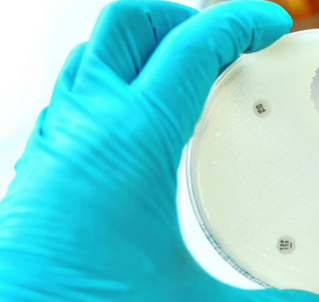
To execute advanced epidemiological analysis to AMU/AMR data to assess space-
temporal patterns and analyze of the strength of associations between antimicrobial resistance
results and antimicrobial usage
- Teacher: Prof Moukam Kakmeni
- Teacher: Dr. Abdel Jelil Njouendou
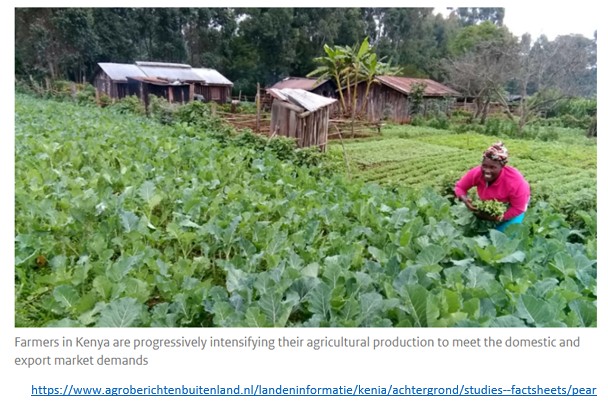
To introduce students to insects, weeds and disease pests, pesticides, pesticides resistance, and impact on AMR. Also, pesticide residues and their impact on food safety and pathology are extensively discussed, to enable trainees to have a holistic view of AMR and appreciate the importance of environmental factors in AMR management.
- Teacher: Dr Kenko Daniel
- Teacher: Dr Sofeu Denis
- Teacher: Dr Manfo Tsague Faustin Pascal
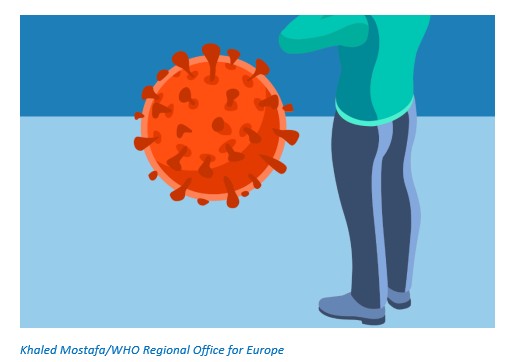
- Teacher: Dr Nji Njayou Ngapagna Arouna
- Teacher: Dr Zofou Denis
- Teacher: Prof Mouiche Mouliom Mohamed Moctar
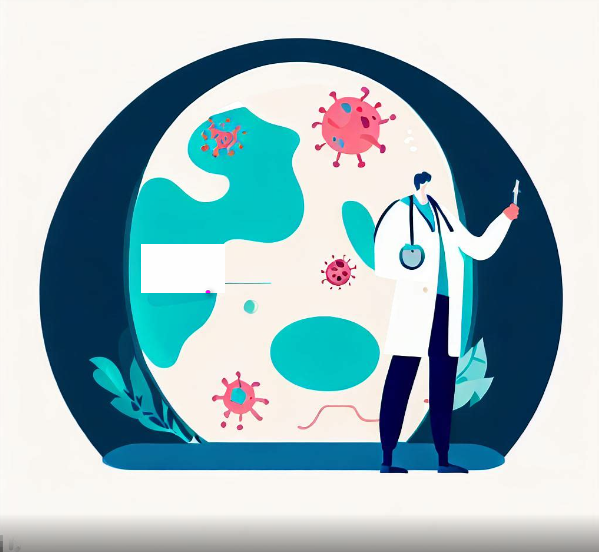
Description: This course aims to provide students with a solid foundation of knowledge on the processes driving antimicrobial resistance emergence, persistence, transmission and spread at local, national, regional and global levels. It will familiarize the students with insights on the socioeconomic burdens of AMR at global, regional and national levels, and discuss major tools applicable to societal and socioeconomic disease impact investigation. Through classroom lectures, discussions on case studies and discovery activities, learners will be introduced to the concept of One Health and edified on the importance of a One Health approach in tackling the AMR crisis.
Learning outcome: Upon completion of this course, learners should be able to- Describe epidemiological processes relevant to infectious diseases, with a focus on antimicrobial resistance in a global context;
- Outline the importance of antimicrobials in human health and animal/plant production;
- Outline the magnitude of antimicrobial resistance;
- Discuss the evolution and drivers of antimicrobial resistance;
- Outline the resistance phenotypes of major public health importance;
- Outline the global strategies for combating AMR and the role of surveillance;
- Describe international AMR surveillance initiatives for human and animal health;
- Explain what is meant by One Health and discuss the importance of this approach in addressing AMR;
- Describe an example of a One Health AMR problem;
- Describe examples of measures that can be implemented by different sectors in a One Health approach to controlling an AMR problem;
- Identify the international and national organizational frameworks that support global and national management of AMR;
- Describe the key features of guidelines and protocols available to support a One Health approach to AMR surveillance;
- Conduct a reflect on how their role fits within a One Health approach to addressing AMR in their country.
Cox, G. and Wright, G. (2013) ‘Intrinsic antibiotic resistance: mechanisms, origins, challenges and solutions’, International Journal of Medical Microbiology, 303(6–7), pp. 287–92 [online]. Available at https://www.sciencedirect.com/ science/ article/ abs/ pii/ S1438422113000246
Center for Disease Control (CDC) (2017) ‘About antibiotic resistance’ [online]. Available at https://www.cdc.gov/ drugresistance/ about.html
Review on Antimicrobial Resistance (2014) Antimicrobial Resistance: Tackling a Crisis for the Health and Wealth of Nations, London: HM Government [online]. Available at https://amr-review.org/ sites/ default/ files/ AMR%20Review%20Paper%20-%20Tackling%20a%20crisis%20for%20the%20health%20and%20wealth%20of%20nations_1.pdf
World Health Organization (WHO) (2015b) Global Action Plan on Antimicrobial Resistance, Geneva: WHO [online]. Available at https://apps.who.int/ iris/ bitstream/ handle/ 10665/ 193736/ 9789241509763_eng.pdf
WHO (2016) ‘United Nations high-level meeting on antimicrobial resistance’ [online]. Available at https://apps.who.int/ mediacentre/ events/ 2016/ antimicrobial-resistance/ en/ index.html
WHO (2017) Prioritization of Pathogens to Guide Discovery Research and Development of New Antibiotics for Drug-resistant Bacterial Infections, Including Tuberculosis, Geneva: WHO [online]. Available at https://apps.who.int/ iris/ handle/ 10665/ 311820
Michael Anderson, Michele Cecchini, Elias Mossialos (Editors). Challenges to Tackling Antimicrobial Resistance Economic and Policy Responses. Cambridge University Press. 2019; www.cambridge.org/9781108799454 DOI: 10.1017/9781108864121.
World Health Organization (2012a). The evolving threat of antimicrobial resistance: options for action. Geneva: World Health Organization. (http://apps.who.int/iris/bitstream/10665/44812/1/9789241503181_eng.pdf, accessed 06 July 2021).
Morel et al. Antimicrobial Resistance and Infection Control (2020) 9:187 https://doi.org/10.1186/s13756-020-00822-6
PorooshatDadgostar. Antimicrobial Resistance: Implications and Costs; Infect Drug Resist. 2019; 12: 3903–3910. doi: 10.2147/IDR.S234610
INTEGRATED SURVEILLANCE OF ANTIMICROBIAL RESISTANCE IN FOODBORNE BACTERIA Application of a One Health Approach https://apps.who.int/iris/bitstream/handle/10665/255747/9789241512411-eng.pdf
World Organisation for Animal Health (OIE) (2019a) Terrestrial Animal Health Code [online]. Available at https://www.oie.int/en/what-we-do/standards/codes-and-manuals/terrestrial-code-onlineaccess/
World Health Organization (WHO) (2015) Global Action Plan on Antimicrobial Resistance, Geneva: WHO [online]. Available at https://apps.who.int/iris/bitstream/handle/10665/193736/9789241509763_eng.pdf ;
Food and Agriculture Organization (FAO) (2016) The FAO Action Plan on Antimicrobial Resistance 2016–2020: Supporting the Food and Agriculture Sectors in Implementing the Global Action Plan on Antimicrobial Resistance to Minimize the Impact of Antimicrobial Resistance, Rome: FAO [online]. Available at http://www.fao.org/3/a-i5996e.pdf
- Teacher: Nkeng Adonis
- Teacher: Dr Zofou Denis
- Teacher: Dr Djuikwo Teukeng Felicite Flore
- Teacher: Jane-Francis Prof. Akoachere

